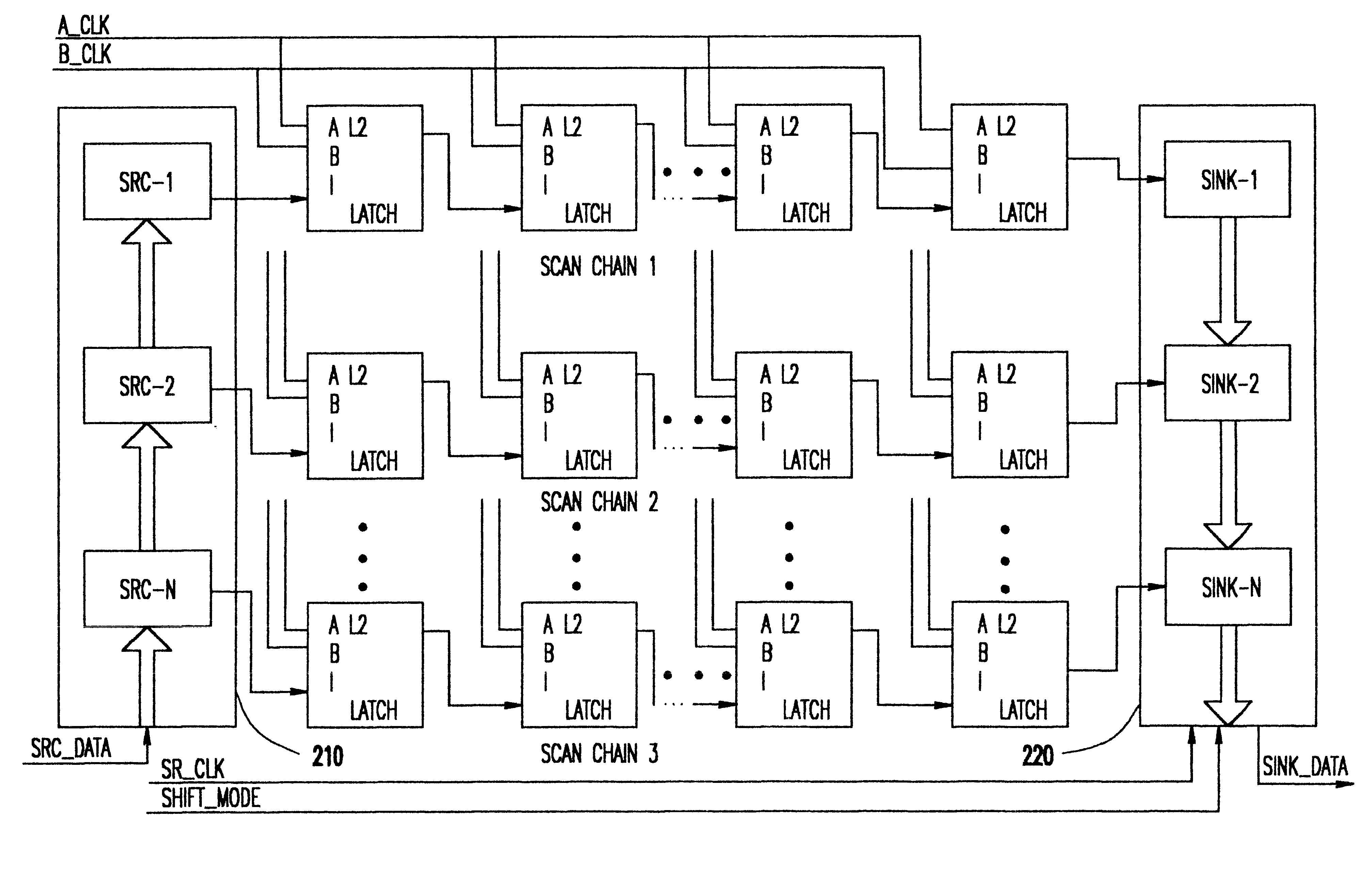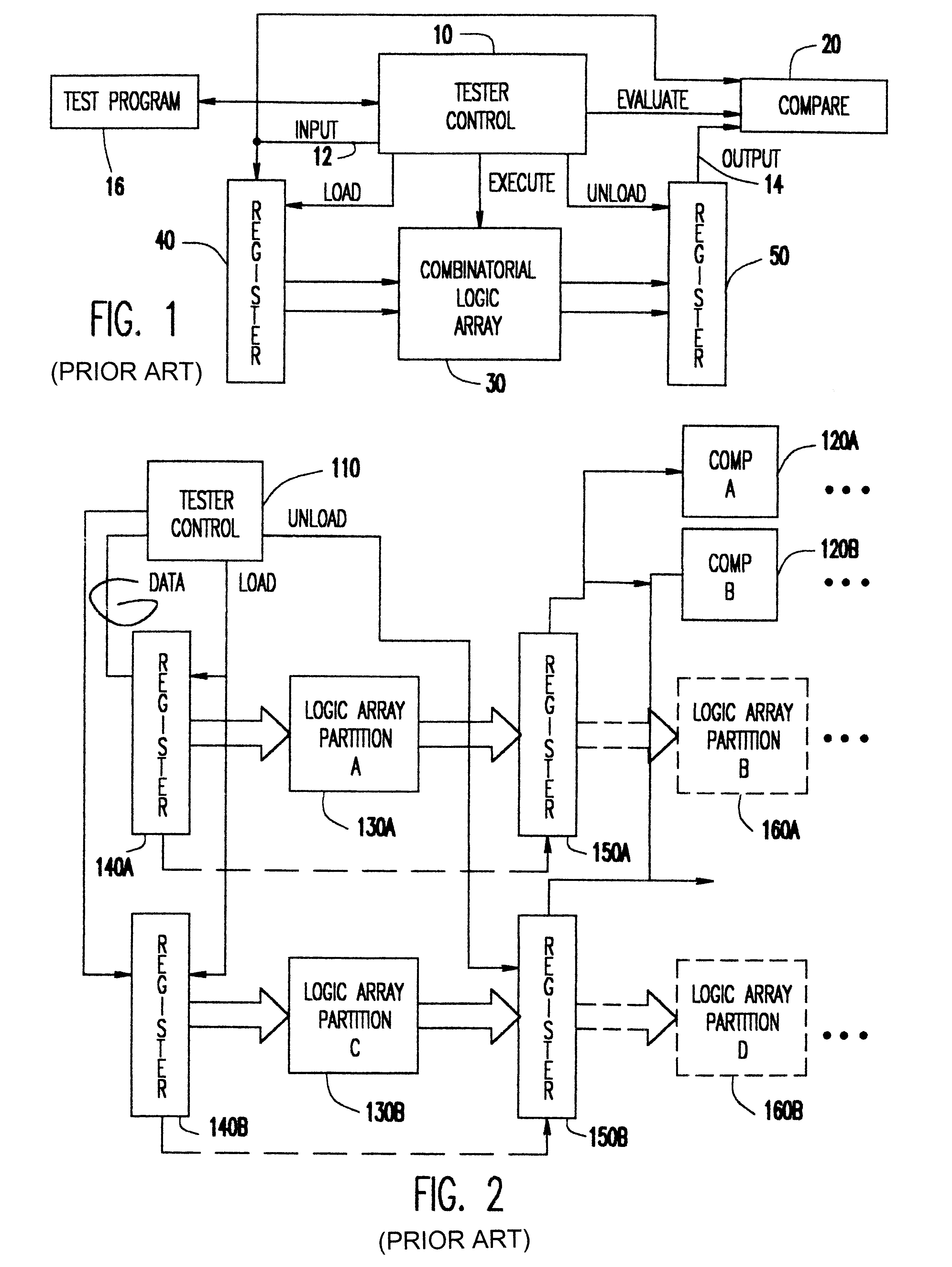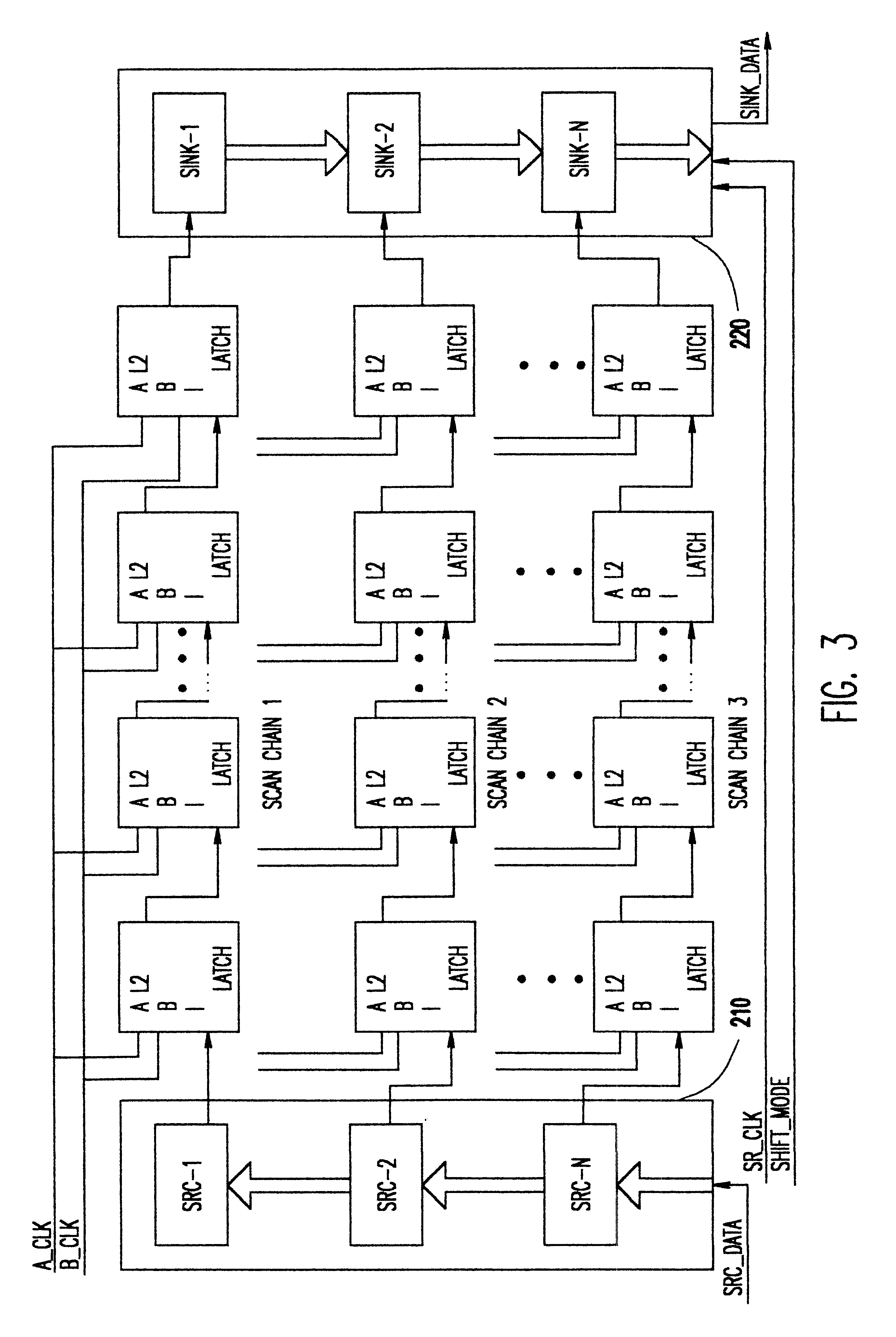High speed sink/source register to reduce level sensitive scan design test time
a source register and sink technology, applied in the field of combinatorial logic array testing, can solve the problems of inconvenient lssd test structure, inconvenient creation of test programs, and inconvenient use of test programs
- Summary
- Abstract
- Description
- Claims
- Application Information
AI Technical Summary
Benefits of technology
Problems solved by technology
Method used
Image
Examples
Embodiment Construction
Referring now to the drawings, and more particularly to FIGS. 1 and 2, there are shown schematic block diagrams representing first and second conventional technique of level sensitive Scan Design (LSSD) testing. It should be recognized that the depictions of FIGS. 1 and 2 are arranged to contrast the present invention, as depicted in FIG. 3, therewith in order to more fully convey an understanding of the invention. Therefore, no portion of any Figure is admitted to be prior art as to the present invention.
In the arrangement of FIG. 1, tester control 10 and comparator 20 are considered to be respective elements of any tester apparatus suitable to perform LSSD testing. Connections 12 and 14 represent a single pair of pins including an input pin and an output pin for connection to the chip and providing and retrieving LSSD data patterns in accordance with a test program 16. Comparator 20 provides the function of identifying the portion of the test data sequence which has been employed ...
PUM
 Login to View More
Login to View More Abstract
Description
Claims
Application Information
 Login to View More
Login to View More - R&D
- Intellectual Property
- Life Sciences
- Materials
- Tech Scout
- Unparalleled Data Quality
- Higher Quality Content
- 60% Fewer Hallucinations
Browse by: Latest US Patents, China's latest patents, Technical Efficacy Thesaurus, Application Domain, Technology Topic, Popular Technical Reports.
© 2025 PatSnap. All rights reserved.Legal|Privacy policy|Modern Slavery Act Transparency Statement|Sitemap|About US| Contact US: help@patsnap.com



